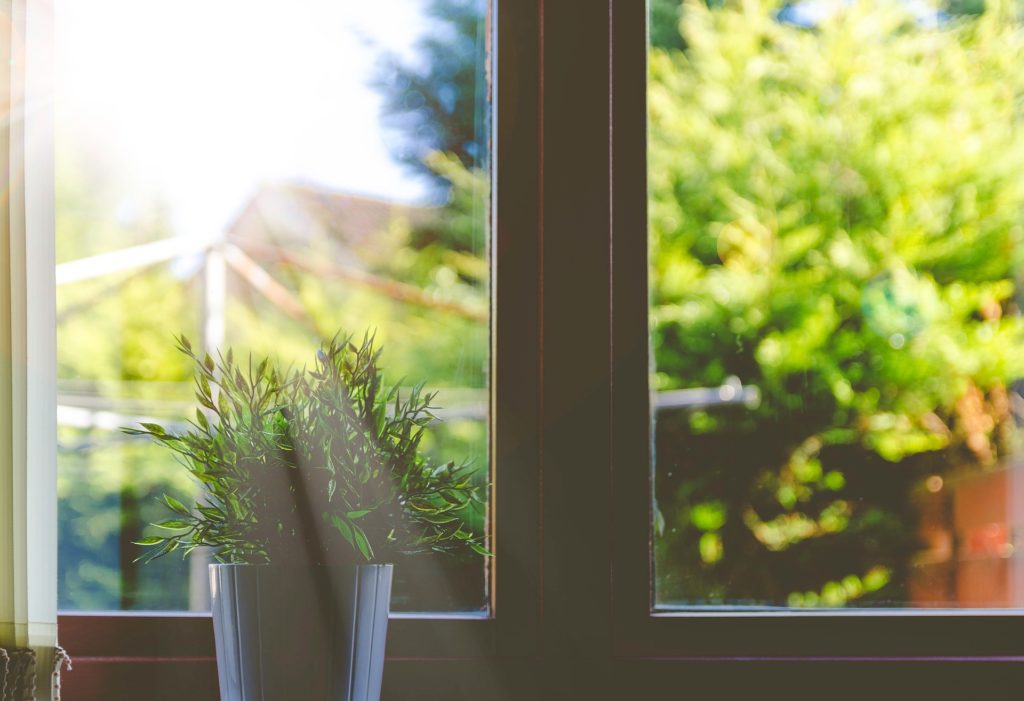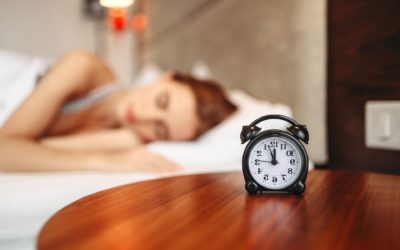What form of light is the healthiest? You might ask yourself this question when you’re shopping for home lighting- after all, it is something you’ll be around all the time. Certain types of light can affect your circadian rhythm and in turn your overall health, so making the right choice for your in-home or in-office lighting matters. In this blog, we’ll examine human evolution with regards to light and circadian rhythm development, and dive into why natural-like light is the best for our health (and provide some solutions along the way, too).
Shop for healthy light solutions
Human Evolution: Bright Days, Dark Nights
Throughout the evolution of our species few things have remained constant; humans specialize in adaptation above all other things. In the space of less than two hundred years, we’ve moved from snail mail via horse post that at times took months to reach a recipient, to having supercomputers in our pockets that do the same amount of work in mere seconds.
Human technological evolution thus far appears exponential. It’s especially shocking when one contrasts the long history of human evolution- modern homo sapiens as a species are estimated to have evolved around 300,000 years ago.
For much of human evolutionary history, and certainly prior to Edison’s invention of the light bulb in 1882, our bodies evolved and developed with an ever-present, and ever-governing variable; the sun.
For millions of years of hominid (and animal) history, the sun’s rising and setting cycles have governed countless things, not least of which was the development of our own bodily systems.
Science describes this set of biological processes governed by the light cycle as our circadian rhythm. Different systems of the body follow circadian rhythms that are synchronized with a biological clock in the brain. This clock is directly influenced by environmental cues, especially light, which is why circadian
rhythms are tied to the cycle of bright days and dark nights- like those found in nature. These processes are carried out via hormonal changes inside the brain and influence a multitude of things including our appetite, mood, stress levels, sleep patterns, productivity, and even our vitamin production.
In the last 2 centuries much of our day-to-day world has changed rapidly, and certainly too quickly for our bodies to adjust. Many of us do not spend most of our days outside, and instead are often receiving most of our light exposure from artificial means.
Often unconsidered are the types of light we install in our homes and workplaces. This disruption of our natural relationship with bright days and dark nights can lead to significant health issues; luckily, we can solve some of these problems with lighting technology.
Below we will discuss the different types of interior lighting, along with their benefits and drawbacks, as well as the importance of the light spectrum in our homes and offices.
Which Type of Light Is Healthiest?

When we talk about things like “healthiest” light, we need to keep a few things in mind; all light has positive and negative effects upon the body. Rather than asking which form of light is healthiest, we should seek to understand which form of light is healthiest for us, and our environment in the moment.
Fluorescents
Fluorescent bulbs are both energy efficient and long lasting. Compared to a conventional light bulb they use 25-30% less energy and last up to 9,000 hours longer, making them a great choice for the energy conscious. However, these bulbs contain a small amount of mercury and have strict guidelines on how they should be cleaned up should one break, and at least one 2011 study found evidence that fluorescent lights release excess UV radiation, which may contribute to eye disorders.
Fluorescent bulbs have a higher initial cost than conventional bulbs, although this is offset by the savings gained from their lifespan and efficiency. Older fluorescent lights may also experience flawed ballasts, leading to obnoxious and distracting humming noises.
CFL Bulbs
CFL stands for compact fluorescent light. These bulbs are a good choice for lamps as they give out light in all directions due to their spiral shape. They use about 75% less energy than incandescent bulbs and last up to 10 times longer. Some CFL manufactures have addressed the mercury concerns found in traditional fluorescents and offer bulbs with a plastic coating that contains the mercury and any shards should the bulb break.
However, CFLs do not make the best dimmer bulbs (most are not dimmable) and turning them on and off affects the longevity and performance of the CFL bulb. They also take time to fully brighten, with some taking several minutes in cold temperatures.
LEDs
LED light bulbs have the longest lifespan of all the bulbs available today; they have been measured to last as long as 100,000 hours and will last at least 50,000 hours. In addition to their long lifespan, LED bulbs are very efficient. They are up to 80% more efficient than an incandescent and even beat out their CFL counterparts. Due to their lifespan and efficiency advantages LEDs are much more expensive upfront.
LEDs however, allow you more control than ever before when it comes to choosing the type of light you receive; specific LEDs can be adjusted to emit different wavelengths of light, allowing you greater versatility in a bulb and the ability to control your body’s exposure to different types of light on the light spectrum, for different health affects (from productivity-boosting blue light to sleep inducing red light).
Why the Light Spectrum Matters for Health
The light we receive from the sun itself is of course the best option when considering our health, but few of us can install glass ceilings and massive bay windows at a moment’s notice. Full spectrum lighting emulates natural daylight and when lighting our homes, it’s important to remember the exponential effects of it.
Using full spectrum lighting has been shown to improve an incredible number of things, including our mood, productivity, mental awareness, color perception, visual clarity, sleep quality, sleep cycle, and our performance at work. Changing your home or office lighting to full spectrum is one of the easiest positive health adjustments one can make, and as such it is being adopted rapidly.
BIOS Healthy Light Solutions
BIOS lighting provides a multitude of home and office solutions with cutting edge technology; they are committed to the growing field of light science and bringing home those discoveries to improve the lives of consumers. Below we will look at some BIOS home lighting solutions and when and where to use them for greatest affect.
BIOS Sky Blue: A21 and BR30
BIOS Sky Blue A21 and BR30 light bulbs are industry leading in the field of home lighting. These bulbs are powered by patented circadian technology that emits specific wavelengths of light that provide the same circadian benefits of the sun during a 24 hour period.
Sporting a daytime and nighttime mode, they can be paired with standard LED dimmers to provide the full range of light needed to boost mood, enhance productivity, increase alertness, and promote a better night’s sleep- nearly perfectly mimicking the bright days and dark nights of our ancestors.
Nightfall A19
With most of us watching TV or on our computers or phones at night, we are constantly exposed to far too much sleep damaging blue light. The Nightfall A19 LED bulb provides an excellent option to combat this exposure, particularly in the bedroom. This bulb is designed to reduce unwanted blue light by 700%;
it brings the outdoor beauty of a campfire indoors and creates a tranquil evening environment that is not only conducive for a better night’s sleep, but also helps the environment by reducing light pollution.
SkyView Wellness Table Lamp
BIOS also offers targeted lighting solutions for bright daylight type light exposure in the SkyView Wellness Table Lamp. Able to cycle through four different modes- sunrise, daytime, sunset, and nighttime- it can help ease your transition through all the phases of the day, all while strengthening your circadian rhythm. It makes an excellent addition anywhere in the home and can be manually adjusted or synced to follow your location’s sun cycle.
Conclusion
Most Americans spend too much time inside- due to in large part to our office-based workplaces. In the interim, our health suffers due to our lack of sunlight exposure and our overexposure to inappropriate lighting. These effects are exponential and touch every facet of our life.
Adapting your environment’s lighting to improve your overall health is by far one of the easiest and most effective ways to optimize your life and health. Whether you’re struggling with falling asleep, morning grogginess, eye strain, mental fatigue, stress, productivity, or maintaining a normal sleep cycle, you stand to benefit massively from the seemingly minor change of installing healthy in-home or in-office lighting.
FAQs
● What type of light is best for your overall health?
Light which mimics the sun is best for your overall health as it governs our circadian rhythm and thus a multitude of our biological processes; in a word, any light that can approximate bright days and dark nights.
● What type of light has negative effects on health?
Blue light at night is commonly produced by our phone, computer, and TV screens. It can cause a litany of problems, including eye strain, poor sleep, headaches, and disruption to our circadian rhythm. In contrast, lack of blue light during the day can have similar effects.
● Does “full spectrum” mean a light is good for you?
Full spectrum is a marketing term that can be used to describe any light. It does not guarantee any health benefit. BIOS lighting is spectrally optimized to provide benefits for both day and night.
● What does a lightbox do?
Light boxes historically have been used for short term light therapy, mainly for Seasonal Affective Disorder (SAD) or the winter blues. They are not designed for continuous use.
● What are the dangers of certain light exposure?
Over-stimulating light (such as blue light) at night can disrupt melatonin hormone production that can make it hard to fall asleep short term and can compromise your circadian rhythms. Under-stimulating light during the day can compromise circadian rhythms as well, making it difficult to perform.


